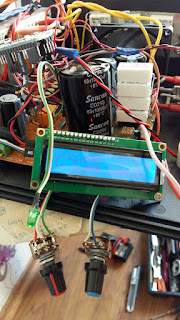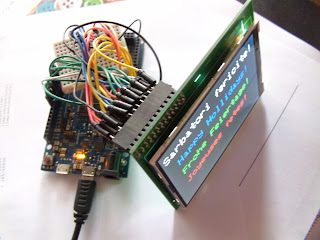Dragos, known under albasete name from elforum (romanian electronic forum) made an useful power supply unit. Schemtic used by albasete is
Original schemtic is from Reber electronic site (3A NAPAJALNIK NASTAVLJIV OD 1V DO 27V article). Also, I found same data in article 1V-27V 3A Variable DC Power Supply (http://powersupply33.com/).
For measure voltage and current it use info from Arduino ca multimetru (3). It use existing resistor for measure current (R5) and add 2 resistor as divider resistor for measure voltage:
Using original PCB board, I draw connexion to Arduino board:
It use an Arduino nano board with i2c LCD1602 display, a active buzzer for indicate shortcircuit case. Also, I put DS18B20 temperature sensor and relay for power a cooler when tenmperature is bigger than a threshold level.
For albasete version, I write psu_reber_ver3ro.ino sketch. In this sketch I put value for albasete case (R1 = 1k put between GND and A1 port, R2 = 39k put between +OUT and A1)
and value for threshold (temax) and hysteresis value (dete):
Now, I put few photo pictures of realization progress:
Dragos (albasete) send me a movie with PSU in tests: 0-30V/0-7A PSU with LM723 and Arduino volt & ampermeter




















































